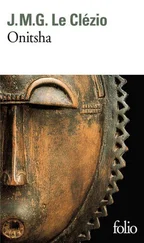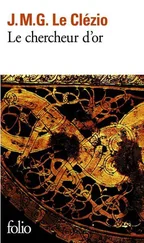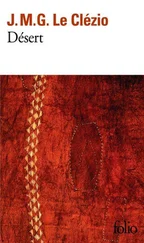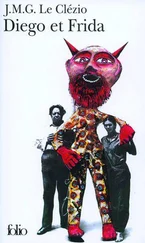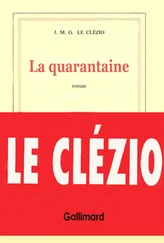The year 1646 saw the publication of Ars Magna Lucis et Umbrae . This heavy folio tome of 936 pages was dedicated to Athanasius’s patron, Johann Friedrich, Count Wallenstein and Bishop of Prague.
Kircher began by describing the sun as the principal source of light, without avoiding the question of the spots, which could sometimes be observed on it surface, & their unhealthy influence. As proof of that he took the invasion by the Swedish armies in 1625, but also the death of the Ming emperor, that of Louis XIII & various catastrophes, the occurrence of which coincided with an inexplicable multiplication of the maculae.
After that, my master looked at the moon, that second source of light in the world, but which only works as a reflector of the sun. He continued with numerous pages on the heavenly bodies, gave for the first time a picture of the planet Jupiter & the rings of Saturn, & continued with a study of the colors: when pure light passed through a prism of a veil of raindrops, he wrote, it was contaminated by the contact, thus producing yellow, red and violet, which are degradations of white, which is the color of light, just as black is that of its absence.
In this connection my master wrote at length on the chameleon & its talent for coloring itself to resemble things it is close to. He added a few remarks on octopuses & other marine creatures with a similar ability, then considered a very curious Mexican species of wood sent to him by Father Alejandro Fabiàn. After having had a bowl carved from this tlapazatli wood, as Father Fabiàn had suggested, Kircher, in my presence, poured some pure water into it. Soon, & with no obvious reason for this change, the fibers of the wood being clean and clear like cherrywood, the water started gradually to turn blue until it took on a magnificent purple hue. Reduced to a powder, the wood continued to produce the same effect, although losing the capacity little by little in the course of time. Kircher gave the bowl to Emperor Ferdinand III, who regarded it as one of his most precious treasures.
From tlapazatli wood, the book went on to the internal structure of the eye & to human vision, emphasizing how everything worked in a similar way to the camera obscura he had tried out in Sicily, to my misfortune. All one needed to do to convince oneself of this, Kircher said, was to take a bull’s eye — or a human eye, should the opportunity present itself — remove the vitreous humor & put it on the box in place of the artificial lens. Everything outside would then appear inside the black box with the precision of a most excellent painting.
Dealing with anamorphosis, he showed how to distort a drawing mathematically so as to make it appear monstrous to the eye, but unexceptional when seen reflected in a cylindrical mirror. Similarly he went through the various means of arranging trees, plants, vines, arbors & gardens so that from one particular viewpoint they would present the image of a man or a dragon, of which there would be no trace from any other point.
After a chapter in which Athanasius gave exhaustive lists of all the lunar months in the form of a “dragon with lunar knots,” by which one could predict all the eclipses, he presented the picture of a man within a dial, showing the zodiacal relationships connecting each part of the body & each illness to each simple or sympathetic remedy that will cure it.
In conclusion, my master embellished his work with a splendid chapter on the metaphysical symbolism of light, crowning his efforts with a new philosophy & recalling the imperishable truths of our religion.
If I have taken the trouble to go through the matter of this Great Art of Light and Shade , it is not for my well-informed readers, who will be perfectly familiar with it, but to give an example to the younger among them, who will hardly be acquainted with Kircher’s work, if at all, with his phenomenal knowledge in all things & with his very individual manner of disentangling the most difficult subjects in a way that is both pleasant & useful. My master never ignored any aspect of the world & whether he was interested in light, in Egypt or in any other specific subject, every time he felt compelled to embrace the whole of the universe before returning to its Creator to praise Him for all these many marvels.
As soon as it was published, this work enjoyed remarkable success. No praise was loud enough to express the admiration of scholars, who devoured it with relish, as if it were a great delicacy. Copies were sent to all the Jesuit missions throughout the world.
Meanwhile, intrigued by the frontispiece & unable to grasp all its subtleties, I went to see Kircher in his study. He welcomed me as usual & interrupted his work to explain the marvelous allegory that the Burgundian, Pierre Miotte, had engraved to his order.
I admitted to Kircher that, although I could understand a good number of these symbols, I had difficulty relating them to each other & that consequently the deeper meaning of the picture escaped me.
“Sit down,” my master said in kindly tones, “there’s nothing very mysterious about it, a little more effort & you would have understood all this mumbo jumbo. But first of all pour us some of this excellent Burgundy that the good Father Mersenne has sent to me, it will perhaps enlighten your mind, provided it doesn’t cloud it entirely …
FAZENDA DO BOI: A real car for the ladies’ man …
“There it is,” said the Countess, stepping aside at the entrance to a large, isolated building a hundred yards or so from the main part of the residence. “I’ll leave you in my husband’s clutches. Don’t join in his game,” she advised with a smile, “or you’ve had it. See you later, I hope …”
With a meaningful glance at Loredana, she turned and left.
“So what do you think of her?” Eléazard asked. “Nice, don’t you think?”
“Odd, I’d say,” Loredana replied without knowing what she really thought of the Countess. “She can certainly knock it back. She was close to making a declaration of love! Good thing you came back with the champagne, I didn’t know how I was going to get out of it.”
Eléazard raised his eyebrows in surprise. She was annoyed with herself for summing up the Countess’s attitude to her in such an off-hand way, with this habit she had of always wanting to get the upper hand, to dismiss others with a single defining comment for the sole reason that she’d been deeply moved by them and didn’t know how to assess the feeling. She immediately made amends: “I’m just talking off the top of my head. The truth is, I liked her. Very much, even. She asked me to give her some Italian lessons and I think I’m going to agree. What do you think?”
“Why not?” said Eléazard, glancing inside the garage. “You can even tell her to come to my place, if that suits you better. Shall we go in?”
“OK,” she said, her mind elsewhere.
They entered what had been the heart of the fazenda when it had been a working farm, in the days when José Moreira’s father was still growing sugarcane on his land: a vast, circular construction where two pairs of oxen went round and round continuously to operate a mill with vertical rollers. Preserved by the Colonel, the mill was prominently displayed in the middle of the shed. Radiating from it, a circle of twenty or so old cars shimmered under halogen lamps that bathed them in a museum light. There were red carpets between the vehicles. A small group of people, among whom several Asian faces could be seen, were gathered around the tall figure of the governor.
“Come and join us,” he said when he saw Eléazard and his companion. “You’ve taken your time, I can say.”
They went over to them beside a splendid coupe with cream and brown paintwork recalling certain tasteless two-tone shoes.
Читать дальше




